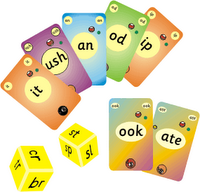
· Consonant digraphs are those spellings wherein two letters are used to represent a consonant phoneme. The most common consonant digraphs are ch for /t?/, ng for /ŋ/, ph for /f/, th for /θ/ and /ð/, and wh for /?/ (often pronounced /w/ in American English). Letter combinations like wr for /?/ and kn for /n/ are also consonant digraphs, although these are sometimes considered patterns with "silent letters."
· Short vowel+consonant patterns involve the spelling of the sounds /k/ as in peek, /d?/ as in stage, and /t?/ as in speech. These sounds each have two possible spellings at the end of a word, ck and k for /k/, dge and ge for /d?/, and tch and ch for /t?/. The spelling is determined by the type of vowel that precedes the sound. If a short vowel precedes the sound, the former spelling is used, as in pick, judge, and match. If a short vowel does not precede the sound, the latter spelling is used, as in took, barge, and launch.
The final "short vowel+consonant pattern" is just one example of dozens that can be used to help children unpack the challenging English alphabetic code. This example illustrates that, while complex, English spelling retains order and reason.
Sight words and high frequency words
There is a body of words that do not follow these rules; they are called "sight words". Sight words must be memorized since the regular rules do not apply, e.g., were, who, you.
Teachers who use phonics also often teach students to memorize the most high frequency words in English, such as it, he, them, and when, even though these words are fully decodable. The argument for teaching these "high frequency words" is that knowing them will improve students' reading fluency.



0 comments:
Post a Comment